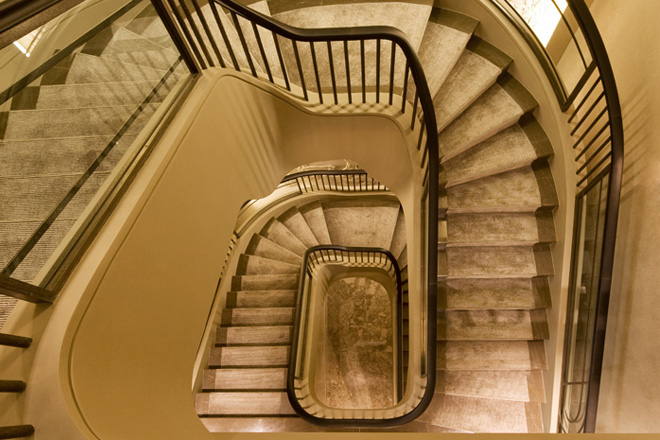Jenna Denson, head of Precision Timber Handrails – the bespoke handrail and woodwork service from UK firm, Clive Durose – comments on trends for 2014.
Wood in interiors
The demand for wood in interiors has seen a massive revival in recent years. We’ve noticed that popular materials for staircases, like metal and glass, are now being combined with wood for features such as handrails and balustrades, to create a striking contrast that is both contemporary and exudes quality.
Wood has always been a material associated with timeless quality, which is one of the reasons it has retained appeal and why we expect to see an increase in the number of clients returning to wood in 2014, using varied finishes and elaborate designs. Wood’s versatility in terms of finish and style means it is suitable for a range of projects, from large-scale contemporary and minimalist designs to more intricate, heritage-led restorations.
Bespoke woodwork
In particular we are seeing a real demand for bespoke woodwork for both residential and commercial projects and we expect this trend to grow into 2014. The popularity for bespoke woodwork is driven by a desire for quality and timeless appeal, as well as a keener eye for detail. Designers no longer want to install ready-made products to fit in with their concept, but typically have a specific idea in mind and are unwilling to compromise on quality or design.
Specifying bespoke woodwork, used to be seen as costly and labour intensive, as parts would need to be hand crafted and assembled on site, but with technological developments in the industry, this is changing. CAD capabilities mean that we can now digitally assess a site and develop accurate 3D models to work from in our studios. Advances in CNC machining also means that bespoke woodwork is much more precise and can be done more quickly than ever before.
Geometric designs
In the last five years, modern, futuristic designs – featuring geometric shapes and linear styles – have been really on trend in kitchens and bathrooms. In 2014, we can expect this trend to inspire design, with more permanent fixtures like handrails, stair parts, doors and window frames well placed to explore facetted shapes, sharp corners and intricate, complex angles.
While contemporary styles have had appeal in the home for decades, the use of wood to explore geometric designs will demonstrate that while wood is a traditional material, it doesn’t always need to be used in a traditional way.
Art deco
Art deco is a trend that established itself in residential properties in 2013, and in 2014 we can expect this influence to inspire the commercial sector, particularly in boutique hotels. Wood is a fantastic material to showcase art deco design, as it can be used to prestigious effect in finishing touches such as doorways and handrails, embodying the sweeping curves, precise detail and playful heritage of this glamorous design trend.
In addition, wood by its very nature not only evokes a sense of heritage, but can also be used with a more modern twist that will have lasting, classic appeal.
Increase of restoration projects
We anticipate that the restoration market will continue to grow in 2014, with investment in listed buildings become more frequent as the economy recovers. We’ve seen an increase in clients looking to improve and restore existing interiors, but there is also a growth in clients looking to rip out fixtures such as staircases, handrails, walls and window frames and put their own stamp on design.
About Precision Timber Handrails
Offering a one-stop-shop service, Precision Timber Handrails is known for designing and manufacturing high-quality, bespoke handrails for contractors, architects and fabricators.



